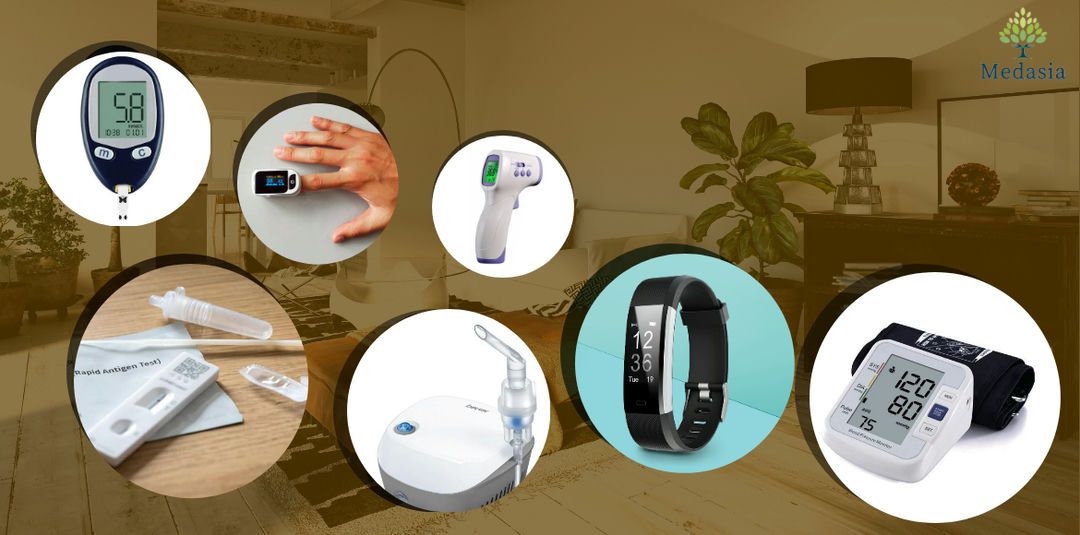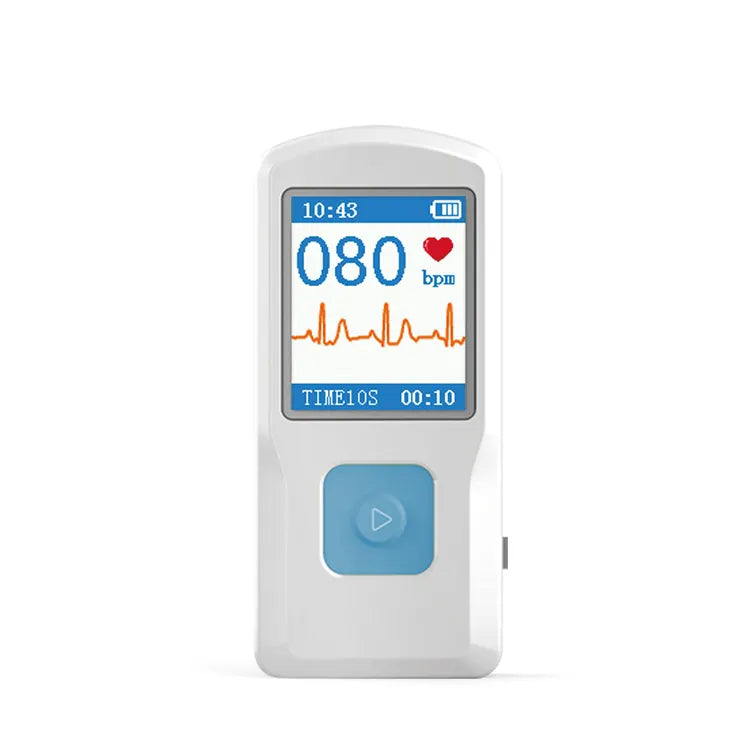Análisis del mercado de dispositivos médicos domésticos en China (2025)

Los dispositivos médicos domiciliarios pertenecen al sector de la salud del consumidor. En los últimos años, el tamaño del mercado global ha mostrado una tendencia al alza, con el mercado norteamericano beneficiándose de sistemas de reembolso de gastos médicos consolidados, mientras que la región Asia-Pacífico posee un gran potencial. En China, impulsado por políticas nacionales de apoyo, el proceso de sustitución de importaciones de dispositivos médicos domiciliarios de alta gama se está acelerando.

Además, la creciente concienciación sobre la gestión de la salud entre las poblaciones con problemas de salud, los grupos de rehabilitación profesional y las personas mayores ha incrementado la demanda de diversos dispositivos médicos domiciliarios, lo que ha impulsado una expansión continua del mercado. Se proyecta que este supere los 300 000 millones de RMB para 2026.
Actualmente, los dispositivos médicos terapéuticos para el hogar dominan el mercado global, mientras que el mercado chino se centra principalmente en productos de monitorización, como tensiómetros y glucómetros, con una alta tasa de penetración. Influenciados por la medicina tradicional china (MTC), productos como ventosas, tablas de gua sha y agujas de acupuntura también ocupan una parte del mercado chino.
Los fabricantes chinos compiten principalmente en los segmentos de gama media y baja, y carecen de competitividad en el mercado de gama alta. Sin embargo, a medida que las empresas chinas líderes crecen y aceleran sus exportaciones, se prevé que la competitividad general de China en el mercado global de dispositivos médicos para el hogar mejore.
La industria está experimentando una transformación significativa, con tendencias centrales centradas en las ventas en línea, la miniaturización de productos y las tecnologías inteligentes.
Este informe examina el panorama actual del mercado y las tendencias emergentes que dan forma al sector de dispositivos médicos de China, centrándose en los impulsores clave del crecimiento, la dinámica competitiva y las oportunidades futuras.
El tamaño del mercado y el potencial de desarrollo de los dispositivos médicos domésticos de China
Rápida expansión del mercado
El envejecimiento de la población ha impulsado la demanda de dispositivos médicos domésticos, lo que ha propiciado un rápido crecimiento del sector. Según el prospecto de salida a bolsa de BMD Medical, el mercado chino de dispositivos médicos alcanzó los 770.100 millones de RMB en 2020, con... dispositivos médicos para el hogar Representando 239.500 millones de RMB (31%). Para 2025, se proyecta que el mercado total de dispositivos médicos alcance los 1,2945 billones de RMB, con un crecimiento de los dispositivos médicos domiciliarios de 463.800 millones de RMB (36%), lo que refleja una tasa de crecimiento anual compuesta (TCAC) del 14%, superior a la TCAC del 11% del mercado general de dispositivos médicos y significativamente superior a la TCAC del 7% de los equipos de diagnóstico por imagen intrahospitalarios. Esto posiciona a los dispositivos médicos domiciliarios como un segmento de alto crecimiento dentro del sector médico.

Distribución regional
Los dispositivos médicos domésticos más comunes incluyen:
⭐Dispositivos terapéuticos: instrumentos de terapia de infrarrojo lejano, dispositivos de magnetoterapia.
⭐Dispositivos de monitoreo: Monitores de presión arterial, medidores de glucosa, termómetros digitales, estetoscopios.
⭐Ayudas para la rehabilitación: concentradores de oxígeno domiciliarios, dispositivos de tracción cervical/lumbar, equipos ortopédicos.
⭐Consumibles médicos: Hisopos de algodón, gasas, bolitas de algodón esterilizadas.
⭐Productos tópicos: Parches refrescantes, almohadillas para terapia de calor.

A nivel mundial, los dispositivos terapéuticos dominan el mercado de dispositivos médicos para el hogar, con una participación del 46,9%, impulsados por la creciente prevalencia de enfermedades respiratorias crónicas, el aumento del gasto en atención médica y la demanda de servicios médicos convenientes. En China, los dispositivos de monitoreo lideran el mercado, con altas tasas de penetración de tensiómetros y glucómetros. Además, productos con influencia de la medicina tradicional china, como ventosas, tablas de gua sha y agujas de acupuntura, ocupan una parte significativa del mercado chino.
Por qué Dispositivos médicos para el hogar Son un sector de alto crecimiento
Márgenes de beneficio neto elevados
Entre 2019 y 2023, el margen de beneficio neto (TTM, método agregado) del sector de dispositivos médicos domiciliarios aumentó del 14 % al 23 %. Esta mejora constante, impulsada por el escalamiento de productos y los nuevos lanzamientos, sitúa la rentabilidad del sector en el primer nivel de la industria sanitaria. En 2023, el margen de beneficio neto del sector se situó entre los tres primeros de la clasificación de Shenwan Healthcare, manteniéndose entre los tres primeros entre 2019 y 2023. El fuerte poder de marca de los dispositivos médicos domiciliarios crea importantes barreras de entrada, y se espera que la continua premiumización de los productos mantenga la rentabilidad a niveles líderes en la industria.

Oferta fragmentada ≠ Bajas barreras de entrada
Si bien el mercado de dispositivos médicos para el hogar ofrece diversos productos y numerosos fabricantes, las empresas líderes que cotizan en bolsa aprovechan las ventajas de los canales y la diversificación de productos. Sin embargo, una cadena de suministro fragmentada no implica bajas barreras de entrada. Desafíos técnicos como las certificaciones de productos, los requisitos de estabilidad y la premiumización crean barreras significativas. El valor de marca sigue siendo una ventaja competitiva crucial, lo que permite una alta rentabilidad.

La premiumización impulsa los márgenes brutos
Entre 2019 y 2023, el margen bruto del sector (método agregado) aumentó del 45 % al 53 %. Empresas clave como Andon Medical, Yuwell Medical y Cofoe Medical experimentaron mejoras en sus márgenes gracias a la continua actualización de sus productos. En 2023, el margen bruto del sector se ubicó en el segundo puesto de la industria sanitaria, manteniéndose entre los tres primeros entre 2020 y 2023.


Poder de marca y economías de escala
Un sólido reconocimiento de marca acelera la adopción del producto y el impacto a escala. Los ingresos de las empresas chinas de dispositivos médicos para el hogar muestran una alta correlación con el número de seguidores en línea (R²=0,9789). El desarrollo de la marca —a través del tiempo, la calidad del producto, la integridad del portafolio y el servicio posventa— genera ventajas competitivas a largo plazo.

Factores que impulsan el crecimiento sostenido en la industria de dispositivos médicos para el hogar
Envejecimiento de la población y demanda de enfermedades crónicas
Se prevé que la población china de 65 años o más alcance los 230 millones para 2025, de los cuales el 75 % padece enfermedades crónicas. Esto impulsa una creciente demanda de dispositivos de monitorización a largo plazo, como glucómetros y concentradores de oxígeno. Con 140 millones de pacientes diabéticos y 270 millones de hipertensos, los dispositivos de monitorización domiciliaria se han vuelto esenciales.

Premiumización de productos y tecnologías inteligentes
Entre 2019 y 2023, el margen de beneficio neto ajustado medio de las empresas de dispositivos médicos domésticos aumentó del 2,9 % al 18 %, impulsado por:
⭐Efectos de escala a partir de la rápida adopción del producto.
⭐Crecimiento de la inversión en I+D: el gasto promedio en I+D aumentó de 110 millones de RMB a 280 millones de RMB, lo que posibilitó la premiumización impulsada por la innovación.


Apoyo a las políticas y reformas sanitarias
Desde 2022, las reformas a las cuentas de seguro médico personal han ampliado la cobertura para incluir glucómetros, tensiómetros y termómetros en regiones como Jiangsu, Shanghái y Lanzhou. Se espera que este cambio de política acelere la penetración en el mercado a medida que más regiones adopten medidas similares.
Los 4 mejores Dispositivos médicos para el hogar Dominando el mercado chino
Los fabricantes globales dominan el mercado de dispositivos médicos domésticos de alta gama gracias a sus ventajas tecnológicas, de vanguardia y de escala. Las empresas chinas, históricamente centradas en los segmentos de gama media y baja, están mejorando gradualmente su competitividad mediante las exportaciones y la innovación.
BMC Medical:Fabricante innovador de ventiladores domésticos.

Liderazgo en patentes: Ganó múltiples disputas de patentes contra el líder mundial ResMed.
Aprobaciones regulatorias:Certificaciones FDA y CE; productos reembolsados en EE. UU.S., Alemania, Italia y Turquía.
Crecimiento de la cuota de mercado: La participación mundial aumentó del 4,5% (2020) al 17,7% (2022).
Yuwell Medical: marca líder china de dispositivos médicos para el hogar.
Dominio del mercado: El mayor número de seguidores de comercio electrónico y ROE entre las empresas chinas que cotizan en bolsa.
Lanzamientos de productos:Se introdujeron monitores de glucosa continuos (MCG) sin calibración de 14 días y se produjeron DEA en China en 2023.
Expansión global: Fortalecimiento del reconocimiento y canales de distribución en el exterior.
Sinocare: Especialista en medidores de glucosa.

Liderazgo de productos: Mayor participación en el mercado chino en monitores de glucosa en sangre tradicionales (BGM); lanzó sistemas CGM en 2023.
Tecnología propietaria: Tecnología de transferencia directa de electrones de tercera generación para CGM.
Certificaciones globales: Aprobaciones de MDR de la UE, Reino Unido y el sudeste asiático para productos CGM.
Cofoe Medical: Proveedor diversificado de dispositivos para el hogar.

Amplitud de la cartera: Cubre el monitoreo de la salud, ayudas de rehabilitación, soporte respiratorio, enfermería médica y terapia de medicina tradicional china.
Crecimiento de la I+D: Aumento del gasto en I+D de 20 millones de RMB (2019) a 110 millones de RMB (2023).
Tendencias globales de dispositivos médicos para el hogar: lecciones del mercado chino
El mercado mundial de dispositivos médicos alcanzó los 612 mil millones en 2023. Los dispositivos médicos para el hogar, que representan el 25% (153 mil millones de dólares) del total, son el segmento de más rápido crecimiento (7,5% CAGR).Para 2030, el 14% de la población mundial tendrá más de 65 años, lo que aumentará la demanda de soluciones de gestión de enfermedades crónicas y atención domiciliaria.El dominio de China en dispositivos de gama media, como medidores de glucosa en sangre (71 %) y respiradores portátiles, refleja patrones de demanda más amplios en mercados emergentes como India y Brasil, donde se prioriza la asequibilidad y las herramientas básicas de monitoreo. Mientras tanto, mercados desarrollados como EE. UU.S... y Europa se centran en innovaciones de primera calidad, ejemplificadas por dispositivos integrados con IA (por ejemplo, sistemas de monitoreo remoto de pacientes) y un estricto cumplimiento con los estándares FDA/CE.

Dinámica del mercado regional global
Mercados desarrollados: Premiumización y tecnologías inteligentes
América del Norte (38 % de participación de mercado):
- La U.S. domina el sector de monitoreo remoto de pacientes (RPM) de 18 mil millones de dólares, con herramientas impulsadas por IA como el ecógrafo portátil de Butterfly Network que está obteniendo el estatus innovador de la FDA.
- La creciente demanda de dispositivos de diálisis domiciliarios (9 % CAGR) refleja modelos de atención cambiantes.
Europa (30% cuota de mercado):
- Alemania y Francia son líderes en robótica de rehabilitación (por ejemplo, exoesqueletos ReWalk), mientras que el Pacto Verde Europeo impulsa la I+D de dispositivos reciclables.
- Desafíos: Los costos de cumplimiento de MDR aumentaron un 30%, afectando a los actores más pequeños.
Mercados emergentes: accesibilidad y localización
China (18% de participación de mercado):
- El mercado de dispositivos médicos para el hogar crece a una tasa de crecimiento anual compuesta (CAGR) del 14% y apunta a alcanzar los 42 mil millones de dólares para 2026. Las exportaciones de medidores de glucosa (Yuwell) y concentradores de oxígeno (BMC Medical) ahora representan el 35% de la producción.
- Política: 12 provincias ahora reembolsan los medidores de glucosa del seguro público, lo que aumenta la sustitución china al 70%.
India y África:
- India: La iniciativa “Ayushman Bharat” redujo los precios de los glucómetros a 12 dólares, aumentando la adopción rural al 40%.
- África: Las fábricas respaldadas por China (por ejemplo, las plantas de ventiladores portátiles de Nigeria) reducen costos, mientras que los dispositivos alimentados con energía solar cubren las brechas energéticas.
Otras regiones clave
- América Latina: Las reducciones arancelarias en el marco de los pactos comerciales regionales elevaron la participación de mercado de los monitores de presión arterial fabricados en China al 45% en Brasil y México.
- Medio Oriente: El proyecto “Ciudad Médica” de los Emiratos Árabes Unidos atrae a Medtronic y Siemens para la producción local de equipos de imágenes.
Principales tendencias mundiales aceleradas por el crecimiento de China:
Escalabilidad rentable: Las economías emergentes están adoptando el modelo de gran volumen y bajo margen de China para ampliar el acceso a la atención médica.
Proliferación de dispositivos inteligentes: La adopción de IoT e IA en productos chinos (por ejemplo, los monitores conectados a la nube de Yuwell) se alinea con las inversiones globales en telesalud, que se proyecta que crecerán a una CAGR del 18 % hasta 2030.
Hibridación regulatoria: El impulso de China a las certificaciones internacionales (por ejemplo, los CGM de Sinocare aprobados por la UE MDR) pone de relieve un cambio global hacia la armonización de normas para facilitar el comercio transfronterizo.
Perspectivas de futuro
Mercados emergentes: Es probable que el Sudeste Asiático y África repliquen el énfasis de China en dispositivos escalables de nivel medio, impulsados por asociaciones con OEM chinos.
Regiones de altos ingresos: Demanda de sistemas interoperables de calidad clínica dispositivos médicos para el hogar (por ejemplo, los diagnósticos basados en IA) se intensificarán, y marcas chinas como Andon competirán en innovación en lugar de en precio.
Sinergias políticas: La iniciativa “Ruta de la Seda Saludable” de China podría cerrar brechas en las cadenas de suministro globales, mientras que las regulaciones climáticas (por ejemplo, el CBAM de la UE) pueden remodelar los centros de fabricación.
China ya no es sólo la “fábrica del mundo” sino un disruptor estratégico en la democratización del acceso a la atención sanitaria en todo el mundo.
Dominio de las ventas en línea
Más del 30% de los usuarios de comercio electrónico de salud compran dispositivos médicos para el hogar a través de plataformas como Alibaba Health y Tmall Health. Los canales en línea mejoran el alcance del mercado, la eficiencia de las transacciones y la experiencia del consumidor.
Miniaturización de productos
Los diseños compactos (por ejemplo, ventiladores portátiles, mini medidores de glucosa) se adaptan a estilos de vida urbanos con espacio habitable limitado.
Integración de tecnología inteligente
El IoT, el big data y la IA permiten una gestión personalizada de la salud. Algunos ejemplos incluyen medidores de glucosa inteligentes que sincronizan datos con plataformas en la nube y dispositivos compatibles con telemedicina para consultas médicas en tiempo real.
preguntas frecuentes
P1: ¿Cómo elegir dispositivos médicos domésticos fiables?
Centrarse en las certificaciones (CFDA/FDA), la reputación de la marca y el soporte posventa.Con más de una década de experiencia, Medasia lo conecta con fábricas que satisfacen con precisión sus requisitos, entregando productos y servicios premium adaptados a sus necesidades.
P2: ¿Cuáles son los dispositivos médicos domésticos más vendidos?
Los productos más vendidos incluyen medidores de glucosa en sangre (71 % del mercado), concentradores de oxígeno portátiles y tensiómetros eléctricos. Explore nuestro catálogo de productos para más detalles.
La Compañía de Medasia
Medasia Se dedica a promover la accesibilidad global a la atención médica, empoderando a las personas a través del autocuidado. Nuestra ambición es garantizar que personas de todo el mundo tengan los medios y el conocimiento para tomar las riendas de su bienestar.
MedasiaImpulsados por la innovación, nos especializamos en autoevaluaciones para diversas afecciones médicas. Ofrecemos productos que permiten a las personas gestionar su salud de forma proactiva, cómoda e independiente. Dé el primer paso hacia un futuro más saludable con nosotros.
¿Está interesado en aprender más o comprar dispositivos médicos para el hogar?
Contáctenos info@medasiagroup.com
Fuentes: OMS, Frost & Sullivan, BCG, Informes anuales corporativos,Viento, prospecto de salida a bolsa de BMC Medical, Zheshang Securities Research, informes anuales de Sinocare, informes financieros de Cofoe Medical.
RECOMENDAMOS
Artículos relacionados
- Suscríbase a MedInsights
- Suscríbase a MedInsights
- Suscríbase a MedInsights
- Suscríbase a MedInsights
- Suscríbase a MedInsights











